Vivian Cintra
Dutch-Brazilian artist
Gerrit Rietveld Academie
DOGTIME Fine Arts / BA
Class of 2022 (Thesis Award Nominee)
Bio
(She/Her) is a multidisciplinary artist, curator, lawyer, writer and researcher born and raised in the countryside of São Paulo State, Brazil. Since 2009, she has lived and worked in The Netherlands. Her research-based practice includes textile sculptures, performances, writing and videos. Her works are a combination of autonomous and socially oriented projects, commonly starting from a very personal story that unravels into larger social-political issues. She is also the Co-Founder and Co-chair of ENGAGEMENT ARTS NL, a not-for-profit feminist organization supporting individuals and communities facing gender-based violence, sexism, discrimination and abuse of power in the Dutch arts and design field. The organization advocates for safer working spaces within the arts in The Netherlands through public engagement, education, and research contribution. You can hire her for a commissioned study, paper, advice, work, training or talk on this matter.
Artistic Statement
I was born in a bible-belt city in the countryside of Sao Paulo, to a conservative family in the last years of the dictatorial period in Brazil. Until today, at the main entrance to my hometown, a large government-placed yellow sign declares to all incoming visitors that the city belongs to Lord Jesus Christ. Although I have left my hometown many years ago, that city has never really left me. The long-lasting impact of Christianism, militarism and colonialism on collective notions of gender and morality, and how these are internalized and externalized again are subjects of interest to me.
Contact: info@viviancintra.com
BFA Rietveld Academy, Thesis Award Nominee
Title “Let me tell you the truth”150 pages
Abstract: This dissertation offers an analysis of the politics of truth and speech, taking into account the historical influence of gender, identity, race, caste and colonialism in the access to the truth-claim. In order to offer a disruption to the often abstract and conceptual discussion of critical theory, this paper uses three narratives as satellite stories to the academic investigation of the themes proposed. These stories also anchor the author and the reader to what is truly at stake - the realm of human experience.
Extract: “You see, the act of determining something as truth is bipartisan: it requires an active part that claims that something is the actual state of things, and a passive part that accepts it as such; a truth claimer without an accepter is just a theorist (conversely, a theorist with an accepting audience may effectively be considered a truth-teller). For the active part of the equation, the intention is of extreme relevance: the truthfulness of the truth-teller, meaning the intentional honesty of the one telling the story, absent of intentionally deceptive will, is almost constitutive of the truth and a pre-condition for its acceptance; (…) - and yet, from the passive part, there isn’t an equivalent threshold: against overwhelming evidence, the passive part of the equation can somewhat not accept (i.e., not believe in) the truth-teller. Much as vision, accepting the truth seems to be an act of choice: just as we only see what we look at, we may only accept what we choose to (hear) - that act, in itself, likely to be affected by what we know or what we choose to believe (to be most likely probably true).”
For purchasing this book, please contact me.
COLOPHON
Text & Research: Vivian Cintra
Tutor: Q.S. Serafijn
Co-advisor & Editor: Delphine Bedel
Graphic Design: Daniel Iglesias Gonzalez
Proofreading: Devon Genser
Font: Badass Libre Fonts by Womxn, spearheaded by Loraine Furter

VIA CURA
(a quasi film), cerca 10 minutes
video-installation
Via Cura is a deconstructed film, based on a script that I wrote to a friend battling cancer, and initially had no intention of ever being performed. The script was a gift, something I wrote to distract her, in an attempt to create her a new world, and give her agency, outside of the medical care facilities.
The plot is a critical fabulation exercise on the Myth of Cura, the Roman Goddess of Care (as unearthed by German philosopher Martin Heidegger, in Being and Time), and the quest for metaphysical healing (materialized in the personification of the myth and the search for the path towards Cura).
The Goddess of Cura (also known as Aera Cura) is attributed in early Roman mythology as the creator of humanity. The myth was first told by the first-century mythographer Hyginus, who narrated in his Fabulae compilation that humankind was created from clay by the personification of care (Cura). And yet, for centuries, the Myth of Cura became largely forgotten in Roman Mythology as the creation of humanity started to be consistently attributed to the Greek Titan Prometheus. The forgotten Myth of Cura attracted the attention of German philosopher Heidegger, who observed a double sense in the personification of Cura. The word “Cūra”, in Latin, has different translations: some consider it to derive from the Latin word “cūrāre,” having a similar meaning to “Care” and “concern,” as in to look closely after someone or something to secure their wellbeing and safety; some translate it as “Cure,” as in the treatment applied to restore one’s good health, to heal it. This duality of the meaning of Cura was then used by Heidegger in shaping Dasein - his notion of being-in-the-world. The problem of being (or of existing in the world) is one of the most fundamental philosophical questions in Western thought; in Being and Time, Heidegger noted that human existence is always an act of being within the world: an individual is neither a subject nor the objective world alone, but a being-in-the-world. Thus, Dasein, for Heidegger, is a way of being while caring for the immediate world in which one lives; a being that exists within the context of the structure of care: being-with-the-world is the only way in which an individual reaches its “authentic potentiality-for-being-a-whole.” To Heidegger, authentic care and concern for the Other are a calling that Dasein answers within its temporal existence on Earth. To Heidegger, it is Cura who symbolizes Dasein, as the entity which will remain in the “possession” of humanity throughout its life.
This film is not finished nor is it intended to ever be finished. The concept of this work is to be an ever evolving film. Multiple parties will be requested (or brought to life using animation) to render the different personas in the film. New elements may be added to the script, and every presentation should be done in a different manner than the one before. Unstable, mutating, as life and cure.
NB: This work is part of the ongoing series Feminist Proposition on World-Building, by the author. This work zooms in to one of the Propositions: Kinships & Radical Care.
In memoriam of Ingrid
CREDITS
Ingrid & Cura: Ingrid Middelkoop (last photo above) & Merel Severs (first two photos above)
Concept, script, direction, camera, makeup, costume design & edition: Vivian Cintra
Avatar design: Vivian Cintra
Avatar animation: Vivian Cintra & Mazouzi7
Avatar development uses Unreal® Engine. Unreal® is a trademark or registered trademark of Epic Games, Inc. in the United States of America and elsewhere. Unreal® Engine, Copyright 1998 – 2022, Epic Games, Inc. All rights reserved.
With special thanks to DE SLOOT Amsterdam & Merel Severs
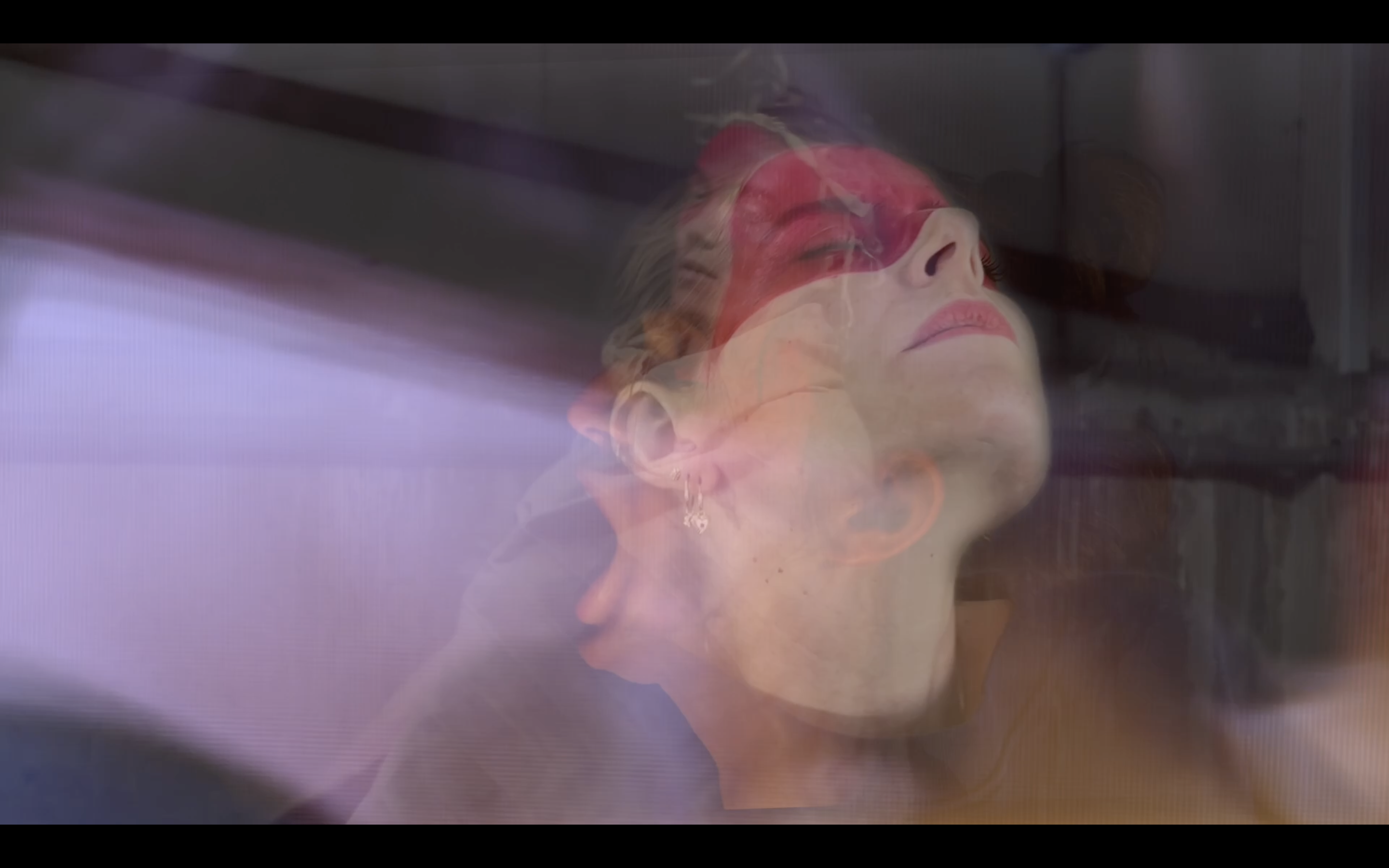

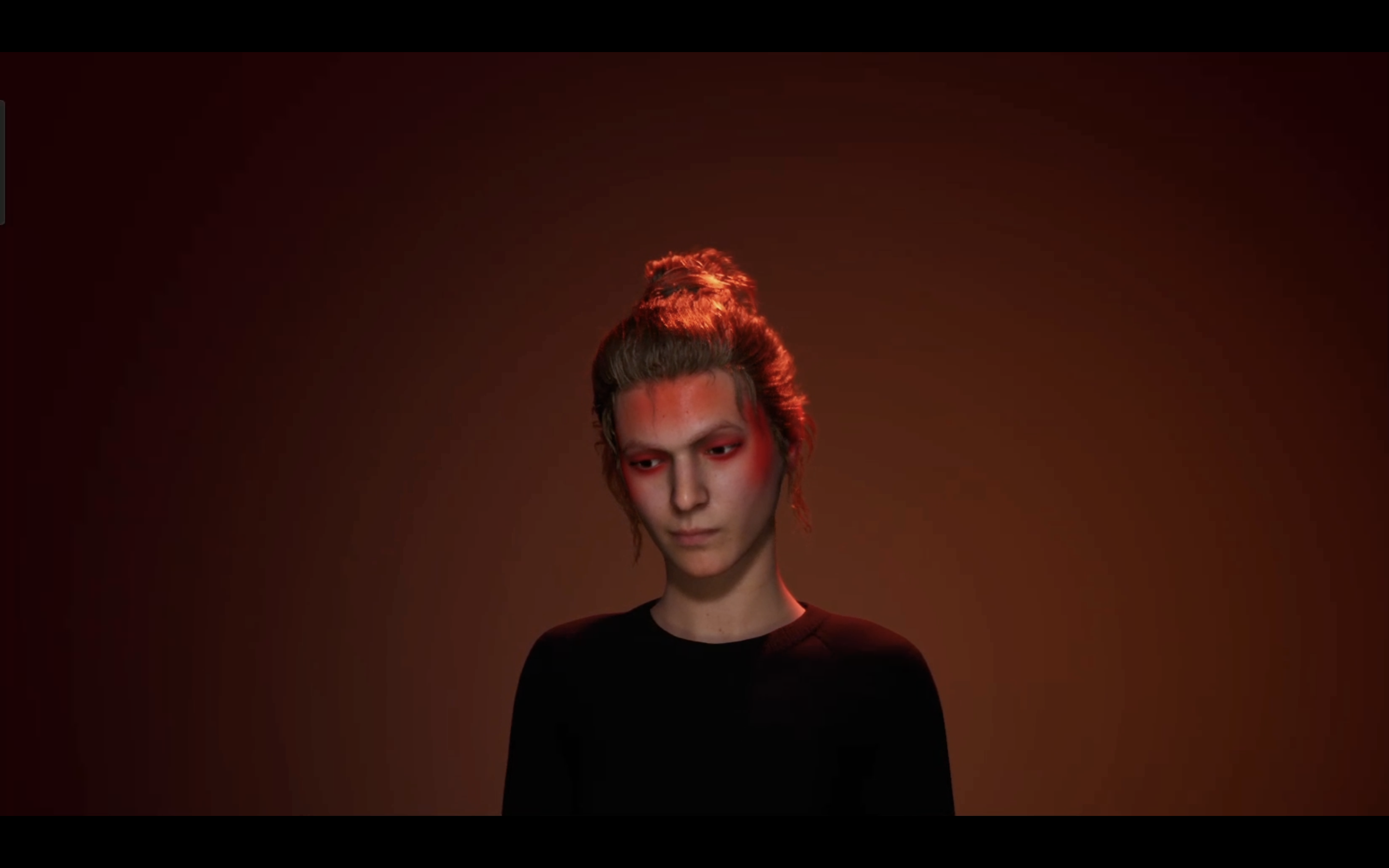
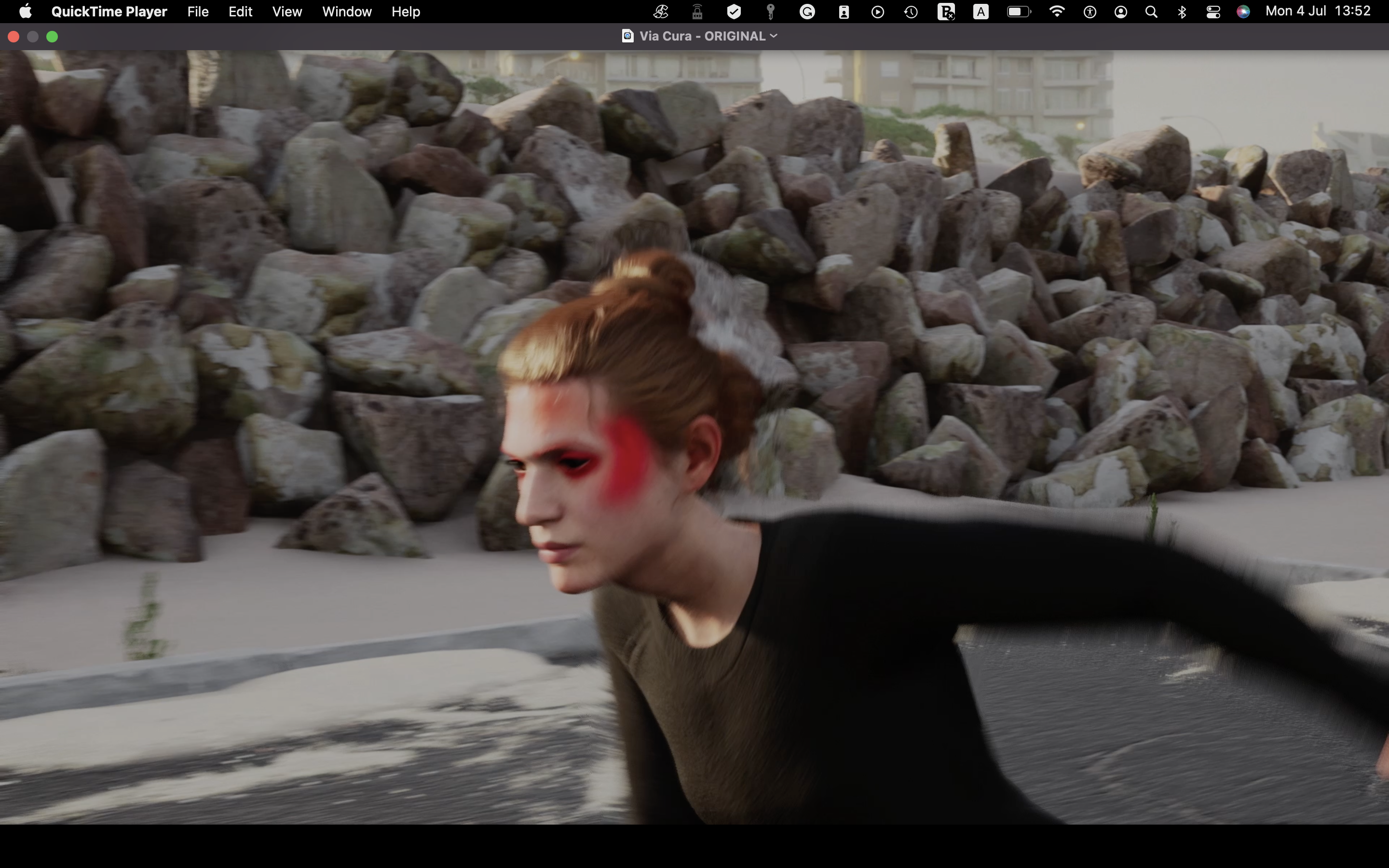
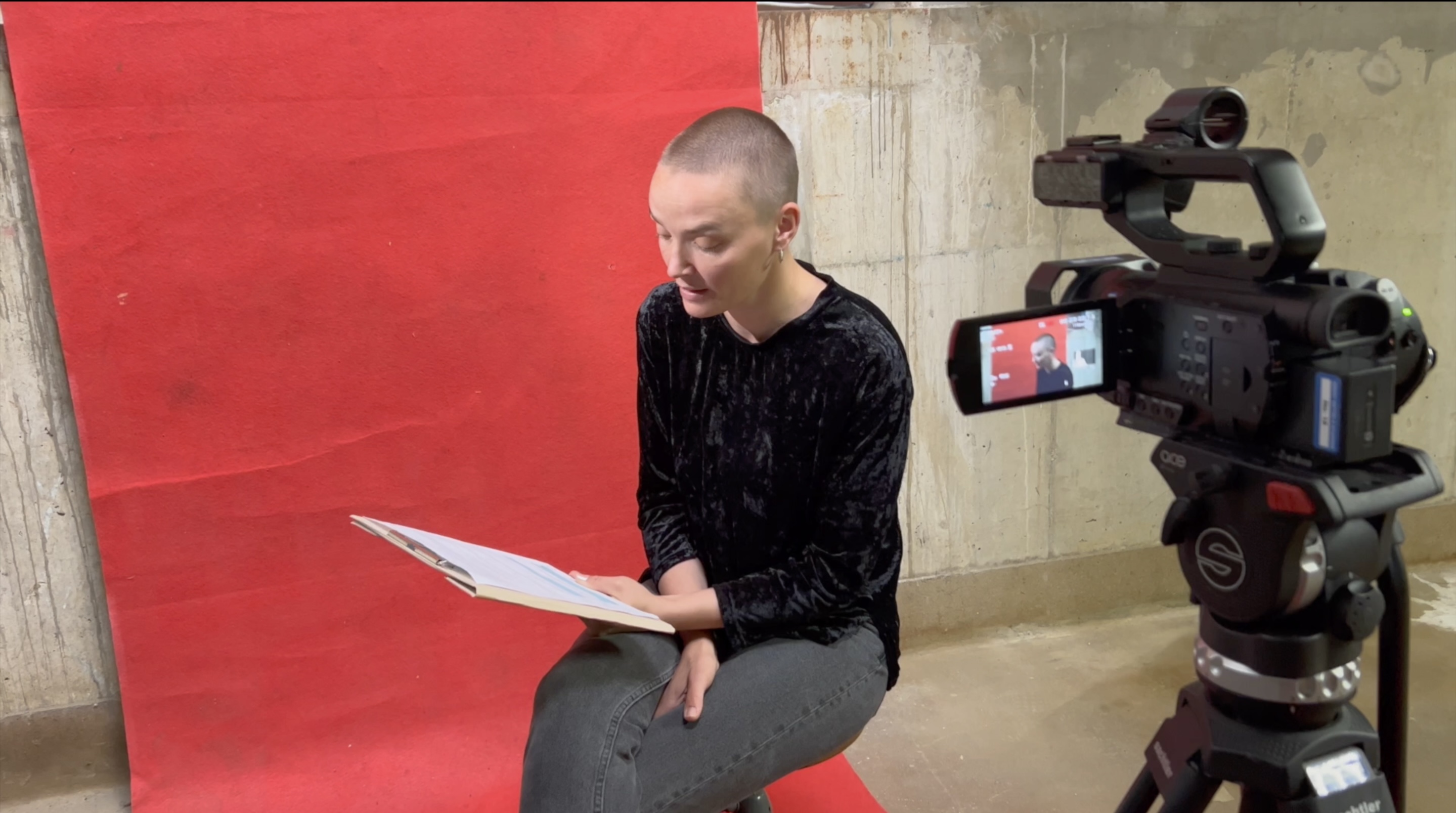

Video sample: *
* A new edit has been made and shown every day during the Graduation Show at the Rietveld Academie.
Vivian Cintra - DOGtime Expanded Painting from Gerrit Rietveld Academie on Vimeo.
Interview of Brazilian Indigenous artist, activist and leader Thaline Karaja, “The Future is Ancestral”
For the first edition of emergences by @bureau_communes, in Paris, Delphine Bedel and I are were invited to make a contribution on the topic of sustentability. Who can say more on the topic of sustaintability than the ones facing the direct effect of predatory practices?
We invited Thaline Karajá, an indigeous Brazilian singer, songwriter, mother, activist for the environment and the Iny Karajá people, and the first indigenous person in the world to participate in The Voice, the singing reality competition, to give her perspective on the matter:
“Sustainability is the balance of everything, not just the best way to live (individually). The human being needs to realize that there is a limit to everything. The world today is globalized, but even so, we have stopped looking around us and seeing that we are in a world that needs more attention than just being exploited in a predatory way.”
To acquire a copy of the magazine, check the website of Bureau Communes.


CREDITS:
émergences 01
genèse & métamorphose
novembre 2022
Directrice éditoriale
Noémie Vidé
Coordination artistique
Jean-Baptiste Lorthiois
Noémie Vidé
Graphisme et mise en page
Camille Vidé
©bureau communes
Talk: DAE Lecture Series hosts → Acts of speaking out and speaking back, giving voices a way to go, a conversation with Ilga Minjon and Vivian Cintra
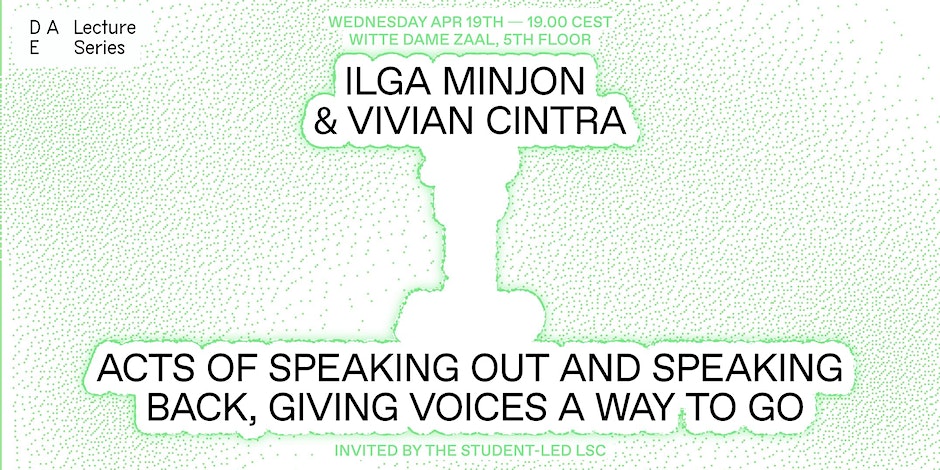
Wednesday 19th April, 19h00-20h30 CEST
Witte Dame Zaal, 5th Floor of DAE
This lecture was hosted together with and Ilga Minjon (she/her) a curator, researcher and advisor working at Stroom Den Haag and a tutor at Design Academy Eindhoven with a background in Art History, and interests in societal questions around public space, ecology, and technology. She aims to weave future imaginaries from artistic practices that speculate on the senses and (networked) relations, as well as on queer, decolonial and feminist re-writings of belonging.
Together we reflected on the topic of speaking, exploring who’s voices we listen to why, and what they are used for.
This session was beautifully moderated by Toni Wagner, a researcher, designer, feminist, fascinated by literature, activism, type, processes and the humanism inbetween.
Click here for more info.
Witte Dame Zaal, 5th Floor of DAE
This lecture was hosted together with and Ilga Minjon (she/her) a curator, researcher and advisor working at Stroom Den Haag and a tutor at Design Academy Eindhoven with a background in Art History, and interests in societal questions around public space, ecology, and technology. She aims to weave future imaginaries from artistic practices that speculate on the senses and (networked) relations, as well as on queer, decolonial and feminist re-writings of belonging.
Together we reflected on the topic of speaking, exploring who’s voices we listen to why, and what they are used for.
This session was beautifully moderated by Toni Wagner, a researcher, designer, feminist, fascinated by literature, activism, type, processes and the humanism inbetween.
Click here for more info.
Talk: “Conducting a Code: a Masterclass for Festivals & Events”, at Go Short Film Festival Nijmegen

During this masterclass, we had an open discussion to explore the critical issue of preventing transgressive behavior in the festival world. Luce Grosjean from Miyu Distribution virtually joined the masterclass to elaborate on the establishment of, and motivations behind Keep Festive, an anti-harassment and discrimination network. We discussed the potential tools needed to create a safe and respectful environment, including the implementation of a code of conduct for festival organizations. Collectivelly, we also adressed the importance of taking action around a festival’s professional guests, volunteers, and partners to ensure a positive and inclusive experience for everyone involved in a festival and explore different ways that festivals and events go about establishing a safe space.
This session was moderated by Emilia Mazik and was organized in collaboration with Kaboom Animation Festival, the Keep Festive Network and Engagement Arts NL.
Click here for more info.
This session was moderated by Emilia Mazik and was organized in collaboration with Kaboom Animation Festival, the Keep Festive Network and Engagement Arts NL.
Click here for more info.
Talk: “Using Code of Conducts to create safe working spaces”, at Theater a/d Rijn
Upon the invitation Theater a/d Rijn, I was in conversation with Merel Severs about our work with Engagement Arts NL.I also gave the audience an introduction on how Codes of Conduct can help us to create safe workspaces and guided the audience in a group exercise on the matter.
Important questions: what makes a code important for makers, and how do you use them in your work? The session stared with a lecture, followed by a writing session to create our own codes of conducts. What would you include in the codes of conduct to create a safe workspace?
Click here for more info.
Talk: “Political Activism as an Artistic Practice”, at Casco Art Institute, for Platform BK Jubileum Solidarity Camp
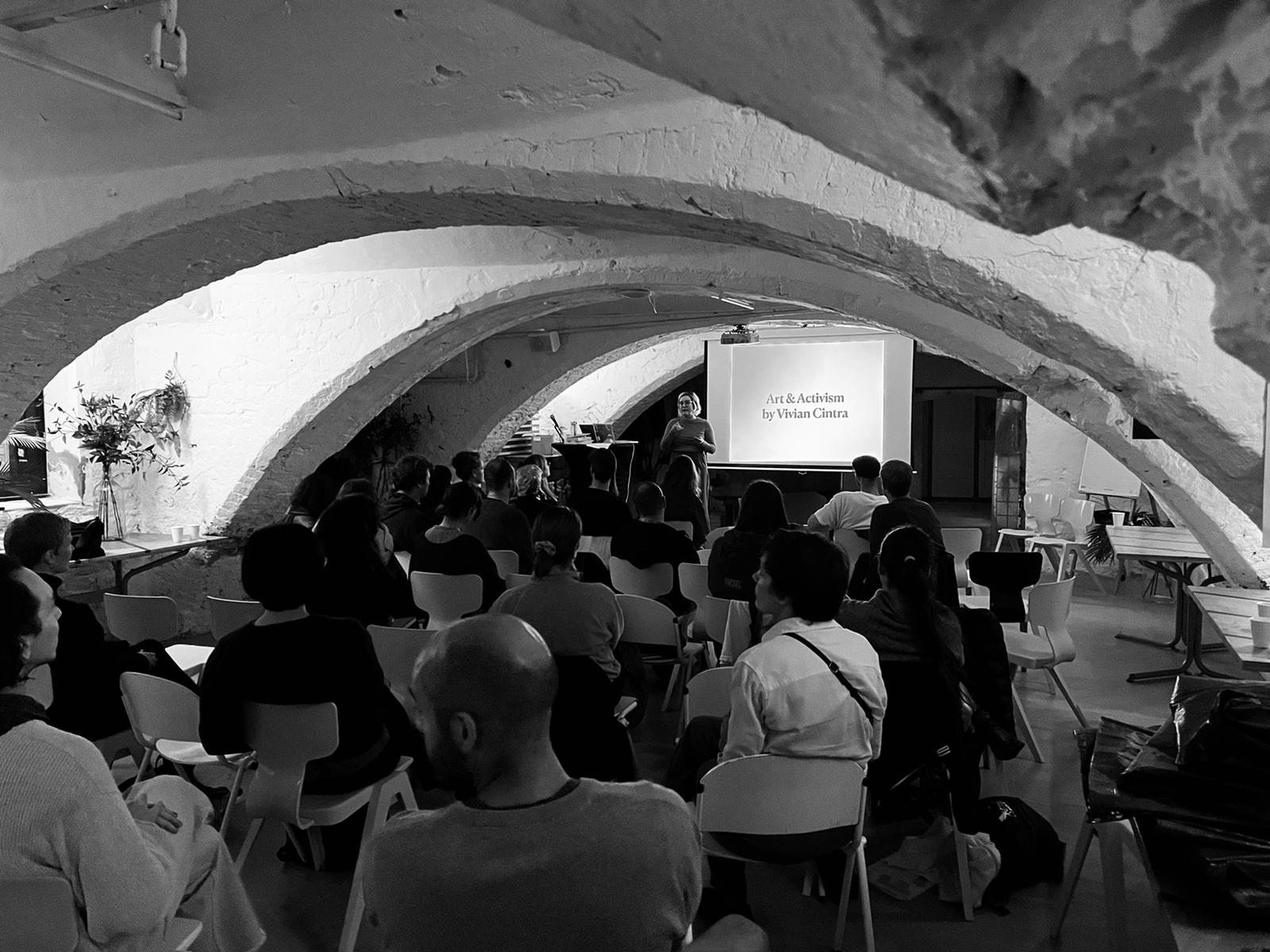
Upon the invitation of Platform BK, I was speaking at Casco Art Institute with Delphine Bedel and Merel Severs about our work with Engagement Arts NL and we brainstormed about active listening, community building and political activism as an artistic practice.
Click here for more info.
Click here for more info.
Video interview: “Homage to Zubrowka, the Club RoXY Muse:
Amsterdam Museum
In the second edition of Collecting the City, one of the themes is Club RoXY. The iconic house club that was home to many kinds of people and burned down in 1999.
Cleo Campert was Roxy’s house photographer and recorded a lot of what happened in the 80s and 90s. In this small exhibition she shares her memories as an homage to Club RoXY and to performing artist Zubrowka International.
As part of the show, Campert interviews Zubrowska regarding her carrier and experiences at Roxy, for which I assisted Campert.
This exhibition opens on September 25th, 2022 and is part of the Collecting the City project. Together with communities, individuals and institutions from Amsterdam, the Amsterdam Museum 'collects' and presents the stories and objects of today's city.

Talks
2023 - DAE Lecture Series hosts → Ilga Minjon & Vivian Cintra - “Voicing” at DAE (Design Academy Eindhoven)
2023 - “Conducting a Code”, Masterclass at Go Short Film Festival
2022 - Code of Conduct for the Arts, Theater a/d Rijn
2022 - “Political Activism as an Artistic Practice”, at Casco Art Institute for Platform BK Solidarity Camp
Interviews
2023 - “Conducting a Code”, Masterclass at Go Short Film Festival
Writings
2023 - “Solodarity”, for Platform BK, Solidarity Camp Reader (to be published)
2022 - Interview “The Future is Ancestral” of Brazilian Indigenous activist, singer and leader Thaline Karaja, with Delphine Bedel, for the first edition of emergences by @bureau_communes, in Paris
2022 - Contribution to Delphine Bedel, Marie Docher (Ed’s) ‘5 years: History as a Manifesto’ Meta/Books, Amsterdam 2022. The publication is a collaboration between Paris Photo fair, the French Ministry of Culture and Kering Foundation - Woman in Motion.
2022 - Thesis “Let me tell you the truth”, Bachelor of Fine Arts (BFA) Rietveld Academie, Amsterdam (Thesis Award Nominee)
2021 - “Baker-Miller Pink, the history of women’s shaving, Hitler and the Gulabi Gang” (self-published)
Shows
2022 - Graduation Show 2022, Gerrit Rietveld Academie, Amsterdam
2021 - Si Si Spex #11, Gerrit Rietveld Academie, Amsterdam
2021 - Stedelijk Museum Amsterdam, Studium Generale Rietveld Academie: “Resilient Bodies: Strategies and Practices for Fluid Embodiments”, Amsterdam, The Netherlands Live performance
2020 - Group exhibition, Unbetween, Edges of distance, Dogtime, Online Show, broadcasted from SHEBANG, Amsterdam
2019 - Group exhibition, Not yet SHEBANG, Unbetween, The Luminous noise of nothing and all, Amsterdam, Sound & textile installation
2019 - One-Off Moving Image Festival, HUMAN versus Nature, "Fogo" (One second movie), screed in public spaces in Valencia (ES) and Gol(Norway) in addition to the net, using QR-codes and offline wifi-spots to access with smart devices, Video work
2019 - 60seconds Festival “HUMAN versus Nature” - Urban screenings - Copenhagen (DK) & Valencia (ES)
2019 - Gerrit Rietveld Academie, Ways of lying, Amsterdam, The Netherlands
Performance lecture
2018 - Jonas Ohlsson’s students’ contribution to “Frankenstein” show in the Vishal, Harlem
Education
2022 - Bachelor of Fine Arts (BFA), DOGtime Fine Arts, Rietveld Academie, Amsterdam (Thesis Award Nominee)
2016 - Orientation Year, KABK
2012 - LL.M. in Public International Law, Universiteit Leiden, The Netherlands
2012 - Bachelor of Laws (LL.B), Faculdade de Direito de Sorocaba (Law School), Brazil
2023 - DAE Lecture Series hosts → Ilga Minjon & Vivian Cintra - “Voicing” at DAE (Design Academy Eindhoven)
2023 - “Conducting a Code”, Masterclass at Go Short Film Festival
2022 - Code of Conduct for the Arts, Theater a/d Rijn
2022 - “Political Activism as an Artistic Practice”, at Casco Art Institute for Platform BK Solidarity Camp
Interviews
2023 - “Conducting a Code”, Masterclass at Go Short Film Festival
Writings
2023 - “Solodarity”, for Platform BK, Solidarity Camp Reader (to be published)
2022 - Interview “The Future is Ancestral” of Brazilian Indigenous activist, singer and leader Thaline Karaja, with Delphine Bedel, for the first edition of emergences by @bureau_communes, in Paris
2022 - Contribution to Delphine Bedel, Marie Docher (Ed’s) ‘5 years: History as a Manifesto’ Meta/Books, Amsterdam 2022. The publication is a collaboration between Paris Photo fair, the French Ministry of Culture and Kering Foundation - Woman in Motion.
2022 - Thesis “Let me tell you the truth”, Bachelor of Fine Arts (BFA) Rietveld Academie, Amsterdam (Thesis Award Nominee)
2021 - “Baker-Miller Pink, the history of women’s shaving, Hitler and the Gulabi Gang” (self-published)
Shows
2022 - Graduation Show 2022, Gerrit Rietveld Academie, Amsterdam
2021 - Si Si Spex #11, Gerrit Rietveld Academie, Amsterdam
2021 - Stedelijk Museum Amsterdam, Studium Generale Rietveld Academie: “Resilient Bodies: Strategies and Practices for Fluid Embodiments”, Amsterdam, The Netherlands Live performance
2020 - Group exhibition, Unbetween, Edges of distance, Dogtime, Online Show, broadcasted from SHEBANG, Amsterdam
2019 - Group exhibition, Not yet SHEBANG, Unbetween, The Luminous noise of nothing and all, Amsterdam, Sound & textile installation
2019 - One-Off Moving Image Festival, HUMAN versus Nature, "Fogo" (One second movie), screed in public spaces in Valencia (ES) and Gol(Norway) in addition to the net, using QR-codes and offline wifi-spots to access with smart devices, Video work
2019 - 60seconds Festival “HUMAN versus Nature” - Urban screenings - Copenhagen (DK) & Valencia (ES)
2019 - Gerrit Rietveld Academie, Ways of lying, Amsterdam, The Netherlands
Performance lecture
2018 - Jonas Ohlsson’s students’ contribution to “Frankenstein” show in the Vishal, Harlem
Education
2022 - Bachelor of Fine Arts (BFA), DOGtime Fine Arts, Rietveld Academie, Amsterdam (Thesis Award Nominee)
2016 - Orientation Year, KABK
2012 - LL.M. in Public International Law, Universiteit Leiden, The Netherlands
2012 - Bachelor of Laws (LL.B), Faculdade de Direito de Sorocaba (Law School), Brazil